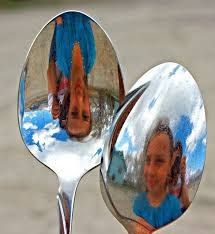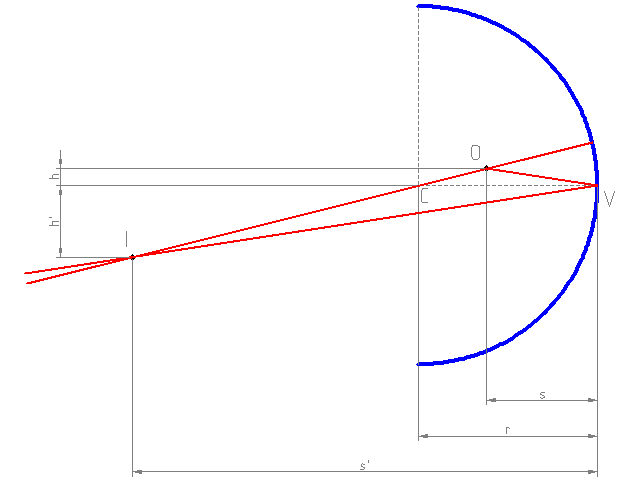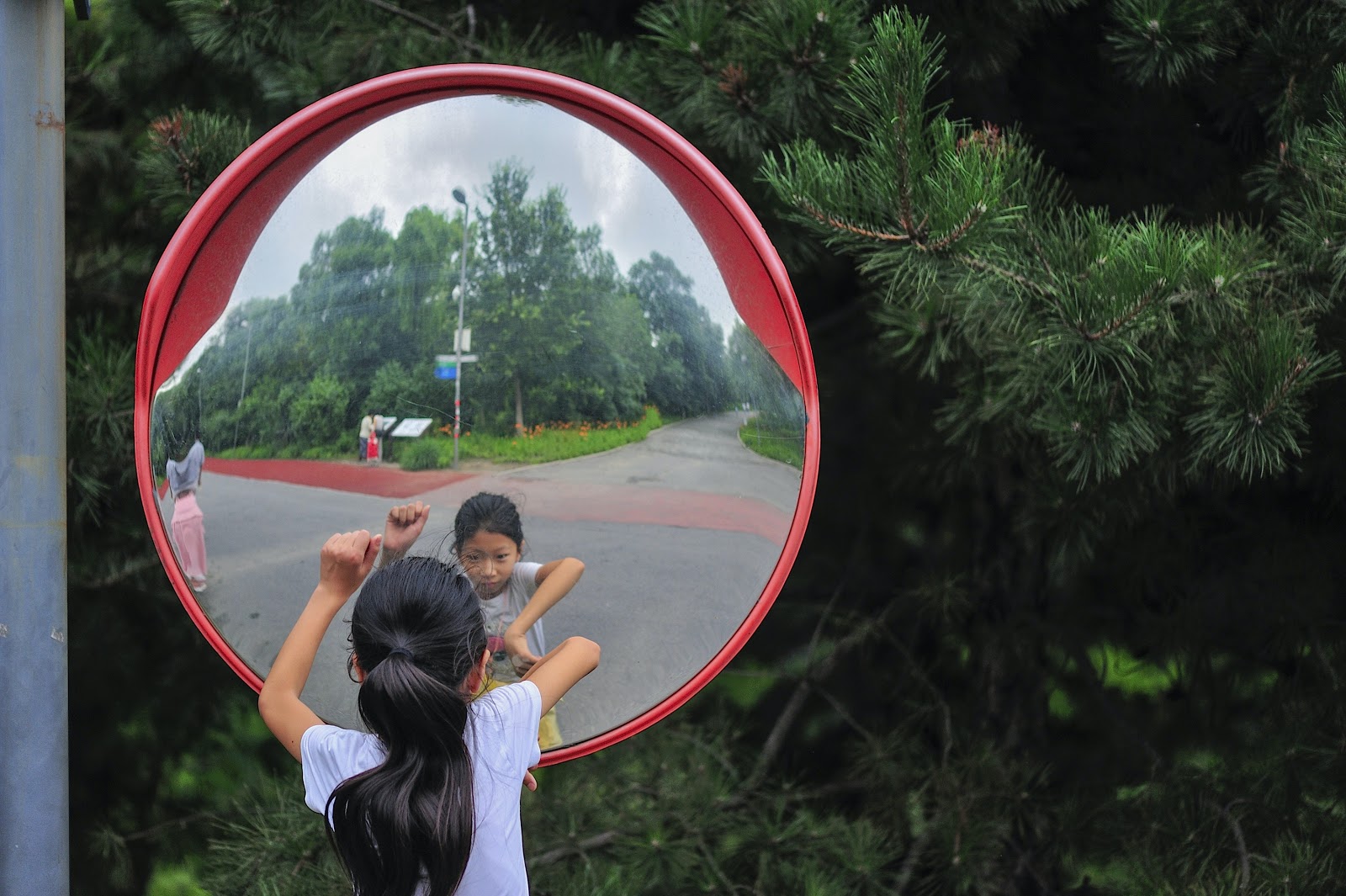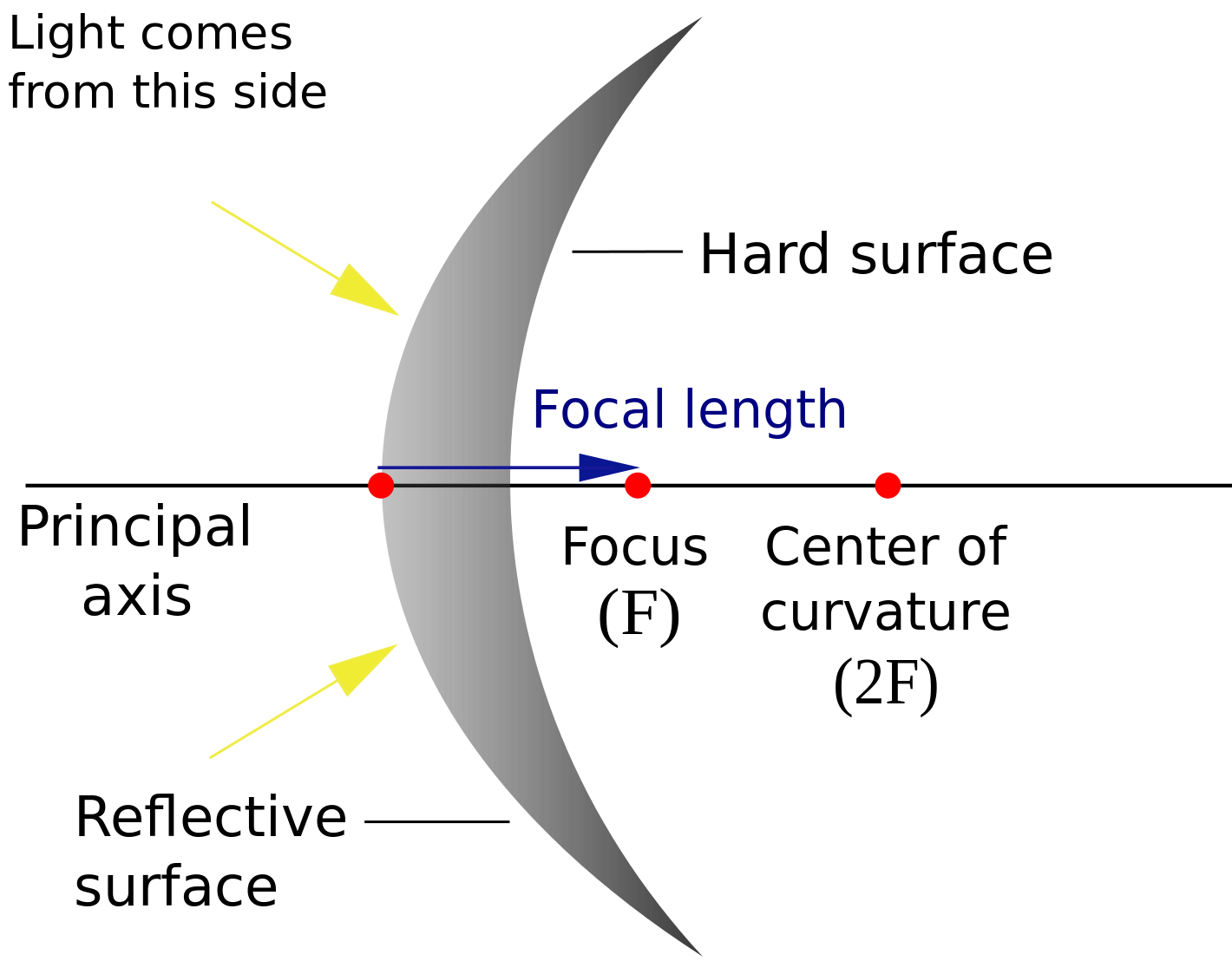Curved Mirrors
- There are many types of curved mirrors such as spherical and parabolic mirrors.
- The most widely used curve is a spherical mirror.
- The hemispherical spoon is also a curved mirror, it has an inner and outer surface.
- One side of the spoon is a concave mirror and another side is a convex mirror.

Spherical Mirror
- Mirrors whose reflecting surface are spherical are called Spherical Mirrors.
- Spherical Mirror, whose reflecting surface is curved inwards is called Concave Mirror.

- The spherical mirror whose reflecting surface is curved outward is called Convex Mirror.

- To study the reflection of light on the curved surface, then we need to know about Centre of Curvature ( C), Pole (P)

- Centre of Curvature – The above diagram a spherical mirror is part of the imaginary sphere. The centre of the hollow sphere of which the spherical mirror forms a part.
- Pole (P) – The geometrical centre of the spherical mirror.
- Principal Axis (PC) – The perpendicular line connecting the pole and the centre of curvature of the mirror.
- The radius of Curvature (R ) – The distance between the pole and centre of curvature of the spherical mirror.
- Principal Focus (F) – The point on the principal axis of the spherical mirror where the rays of light parallel to the principal axis meet or appear to meet after reflection from the spherical mirror.
- Focal Lenght (f) – The distance between the pole and the principal focus.
- The radius of curvature and focal length are related, thereby by R = 2f.
Sign Convention for Determination of Distances
- A collection of sign laws called the cartesian sign convention.
- Convention the pole (P) of the mirror is considered as the origin.
- The principal axis is considered as the x-axis of the coordinate system.
| Type of Mirror | U | V | f | R | Height of the Object | Height of the Image | ||
| Read | Virtual | Real | Virtual | |||||
| Concave Mirror | – | – | + | – | – | + | – | + |
| Convex Mirror | – | No Real Image | + | + | + | + | NO Real Image | + |
- The object is eternally placed on the left side of the mirror.
- All distances are estimated from the pole of the mirror.
- Distances estimated the direction of incident light are understood as positive and those measured in the opposite direction are considered as negative.
- All distances estimated perpendicular to and above the principal axis is considered to be positive.
- All distances estimated perpendicular to and below the principal axis is considered to be negative.
